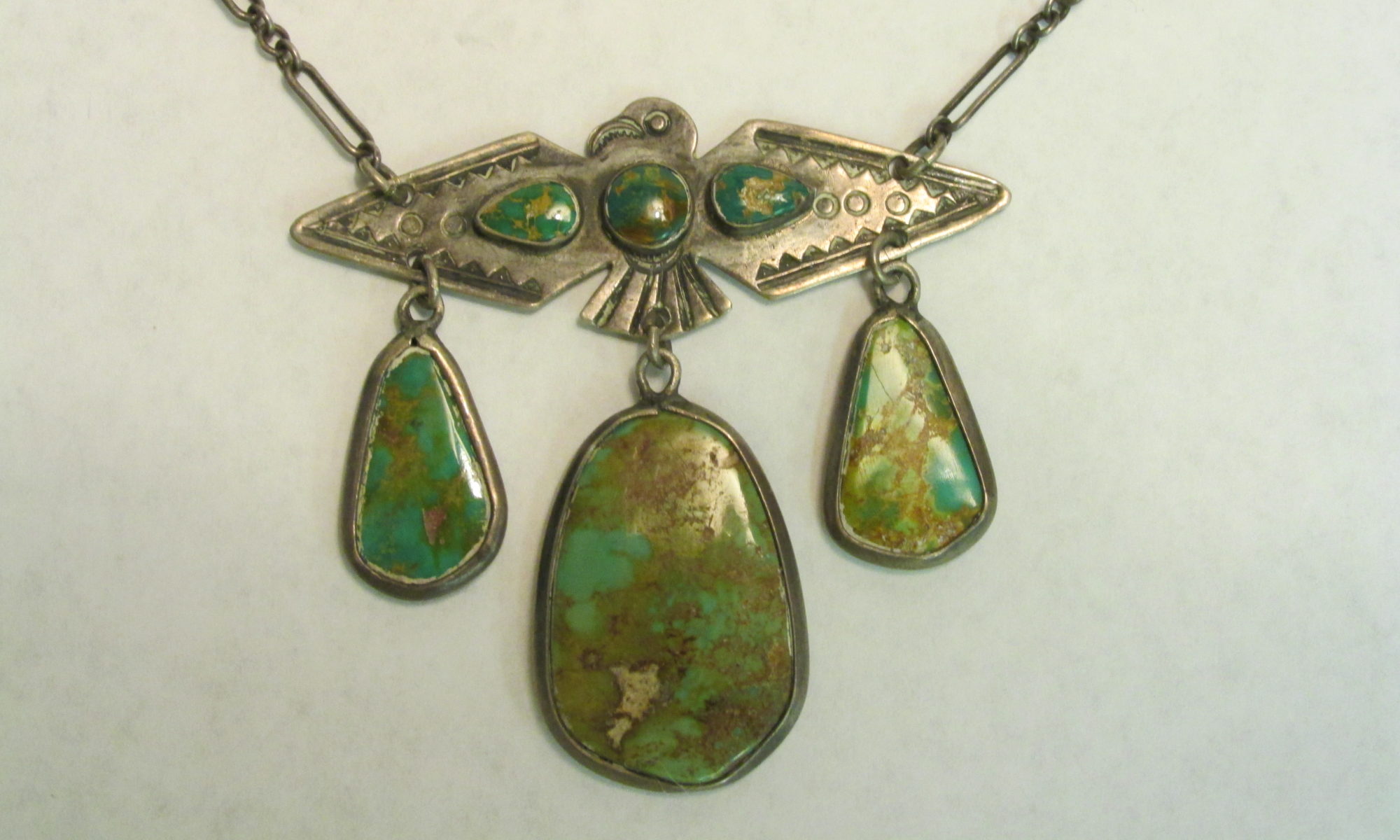
FIRST OF ALL, ZUNI JEWELRY-MAKING DATES BACK TO ANCESTRAL PUEBLO PREHISTORY. CONSEQUENTLY, EARLY ZUNI LAPIDARIES USE STONE AND ANTLER TOOLS. THEY ALSO USE WOODEN DRILLS WITH FLAKE STONE, OR CACTUS SPINE DRILLBITS, AS WELL AS WOOD ABRADING TOOLS AND STONE, SAND FOR SMOOTHING, AND FIBER CORDS FOR STRINGING.
With the exception of silver jewelry, Most of the materials are always in use in the Zuni region. These include turquoise, jet, argillite, steatite, red shale, freshwater clam shell, abalone, and spiny oyster.
Since pre-contact times, Zuni carve stone and shell fetishes, which they trade with other tribes and even non-Natives. Fetishes are from turquoise, amber, shell, or onyx. Today, Zuni bird fetishes have heishe beads in multi-strand necklaces.
Lanyade is the first Zuni silversmith in 1872 Kineshde, a Zuni smith of the late 1890s, is the first combining silver and turquoise in his jewelry. Zuni jewelers soon becomes known for their clusterwork.
Following the Sitgreaves Expedition in 1854, Captain Lorenzo Sitgreaves illustrates a Zuni forge, which was still in use as late as the early part of the 20th century. The forge is adobe, with bellows handmade from animal skins. Silver is cast in sandstone molds. Thin sheets of silver are cut with scissors and shears.
The establishment of the railroad, with the accompanying tourist trade and the advent of trading posts, heavily influenced Zuni and other Southwest tribes’ jewelry manufacturing techniques and materials.
In the early 20th century, trader C.G. Wallace influenced the direction of Zuni silver and lapidary work to appeal to a non-Native audience. Wallace enjoys the proliferation of the automobile and interstate highways such as Route 66 and I-40, and promotion of tourism in Gallup and Zuni. He employs local Zuni people as clerks, jewelry makers, and miners. He provides tools, equipment, and silversmith supplies to the jewelers with whom he does business. Wallace influences Zuni art by encouraging the use of specific materials that sells well at his posts – such as coral – and discourages others such as tortoise shell.
C.G. provides large chunks of turquoise to Zuni artists, giving them the opportunity to carve figures in the round. Wallace also encourages the production increase and improvement of small-stone techniques like needlepoint and petit point in the hope that these styles are to thwart the production of machine-made jewelry. He also urges jewelers to experiment with silver construction to satisfy his customers’ preferences for lightweight jewelry.
Tucson Indian Jewelry.com offers a HUGE selection of Zuni Jewelry!
Information furnished by Wikipedia.org ©
